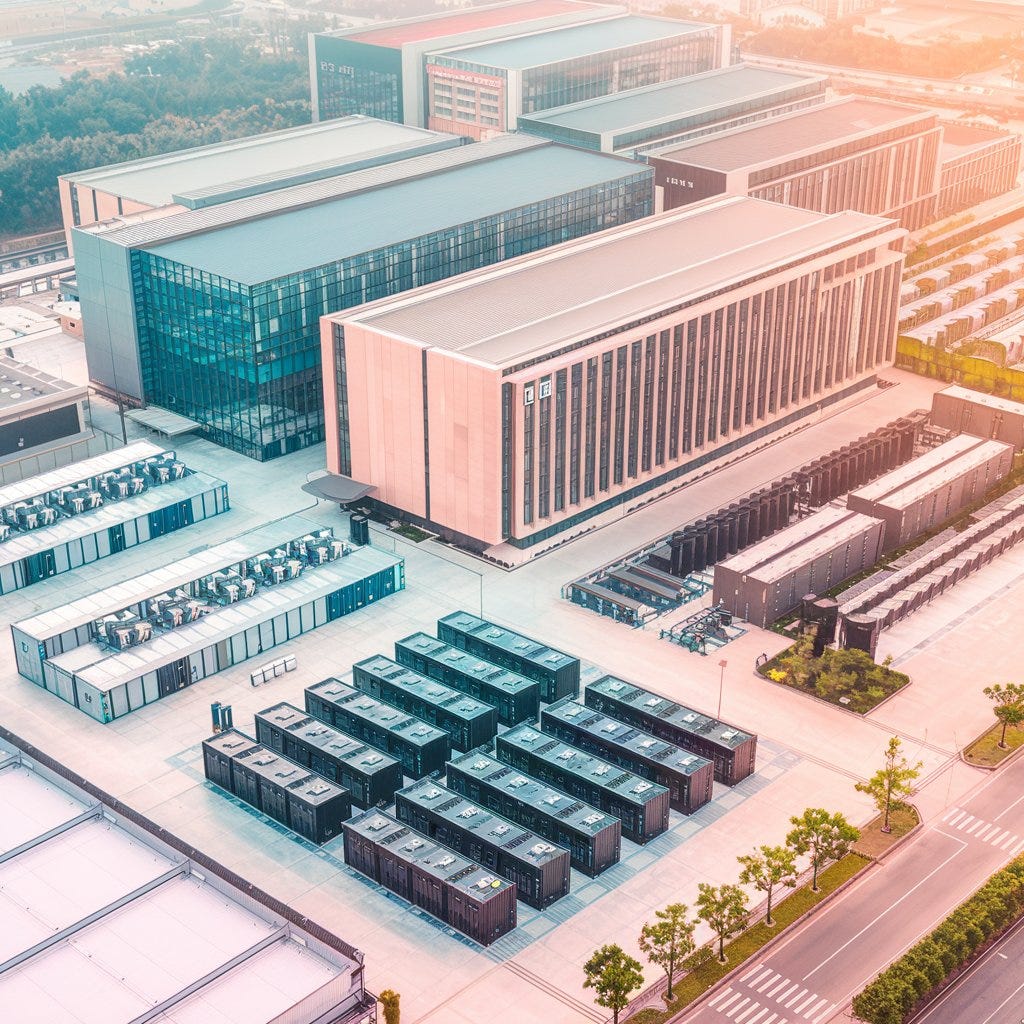How a 10GW AI Cluster Could Redraw the Global Data Center Map
China isn't chasing the latest chip. It's preparing to scale the largest model. The real AI arms race is shifting from silicon to infrastructure. And developing markets are watching closely.
Welcome to Global Data Center Hub. Join 1400+ investors, operators, and innovators reading to stay ahead of the latest trends in the data center sector in developed and emerging markets globally.
Executive Summary
China is preparing the conditions to consolidate over 1 million GPUs into centralized AI clusters by 2026.
The country’s core advantage is not transistor density but surplus industrial power and sovereign-scale buildout capacity.
While chip sanctions limit Western exports, they have accelerated China’s investment in domestic chip design and packaging.
Power-first regions such as the Three Gorges area, with over 10 gigawatts of flexible capacity, could be repurposed into hyperscale training centers.
Developing nations with stranded generation, favorable policy, and geopolitical neutrality could become the next wave of AI infrastructure growth.
What Happened
A silent realignment is underway.
While the United States focuses on chip access and fabrication bottlenecks, China is engineering the largest single-site AI infrastructure buildouts in the world.
China’s GPU supply, though fragmented across commercial and state-aligned labs, could soon be centralized into national training clusters.
The power is already there. The fiber is being laid. And the decision-making structure allows rapid execution once the directive is issued.
In parallel, countries like Malaysia, the UAE, and Ethiopia are moving to create energy-first zones for sovereign compute. These markets are not just catching up.
They are learning to skip steps.
Why It Matters
1. Energy Capacity Is the New Limit
The bottleneck for training the next generation of AI models is not flops or tokens. It’s megawatts.
China can redeploy power from energy-intensive industries like aluminum production and redirect it to GPU clusters within months.
No rezoning. No public hearings. No multi-year permitting cycles.
In contrast, most US-based clusters remain underpowered. Grid expansion is slow, and power procurement often requires navigating fragmented markets and utility commissions.
2. Centralized Compute Will Accelerate Model Scaling
Distributed training clusters in the West are increasingly networked but still constrained by latency, bandwidth, and management complexity.
A 10 gigawatt data center with 1 million GPUs under a single roof would enable scale that no US-based firm can match in the short term.
Centralization does not just increase model size. It improves throughput, lowers cost per token, and reduces experimentation cycles.
This is not about having more compute. It is about having better organized compute.
3. Sovereign Infrastructure Strategy is Outpacing Market-Driven Buildout
China’s strategy isn’t reactive. It’s proactive.
Instead of waiting for hyperscalers to request capacity, infrastructure is being built ahead of demand, aligned with industrial policy and long-term AI goals.
This model is now spreading.
In the Gulf, GPU cluster development is already linked to national strategies.
In Southeast Asia, governments are offering power and land in integrated packages.
In East Africa, the potential exists, even if execution is not yet mature.
4. Data Center Growth is Moving to the Periphery
The geography of hyperscale is shifting.
As compute becomes commoditized and chip access more evenly distributed, location advantages revert to fundamentals.
Power availability. Fiber latency. Policy flexibility.
The next 100 data centers will not follow the same map as the last 100.
Markets like Ethiopia, Indonesia, and Kazakhstan could become meaningful destinations for AI workloads if they align infrastructure with strategic neutrality and sovereign security.
5. Sanctions Will Not Stop the Rise of Alternative Architectures
Export restrictions have degraded the quality of chips reaching China.
But they have also incentivized architectural divergence. China’s AI chips now emphasize memory bandwidth, packaging innovation, and dense vertical integration.
This shift will eventually impact model design.
In a few years, Chinese AI architectures may look fundamentally different, optimized not for global transformer benchmarks but for local applications, edge deployment, and video or image processing.
What This Means
For Investors
The highest-return data center opportunities in the next five years will likely come from outside traditional Tier 1 markets. Sovereign capital, cheap hydropower, and geopolitical hedging will define the next generation of deals.
For Operators
Winning operators will not just be those who build fast. They will be those who can pre-secure multi-gigawatt power, provide political alignment, and offer integrated packaging and compute stacks to hyperscaler tenants.
For Policymakers
The lesson is clear. National data center competitiveness is about energy, execution speed, and infrastructure foresight. Countries that move fast to unlock stranded power and offer stable compute zones will gain strategic leverage in the global AI economy.
The Bottom Line
AI infrastructure is no longer about scale. It is about sovereignty.
China is not building data centers. It is building capability.
And in doing so, it is inspiring a new model for developing markets to follow. One that starts with power. Aligns with policy. And ends with strategic autonomy.
If your infrastructure roadmap begins with land acquisition instead of energy access, you are building the wrong way.
If your next campus cannot support sovereign-scale AI training, it may already be obsolete

